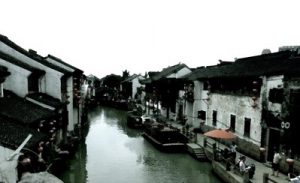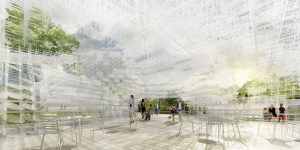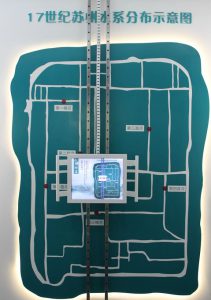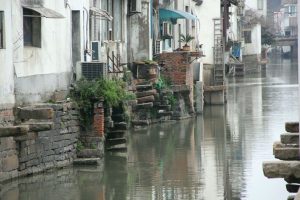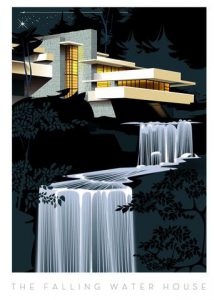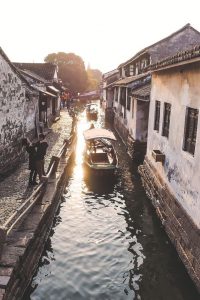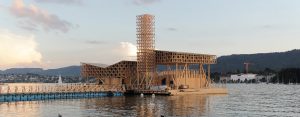Life on the rivers
|
Life on the rivers
Photography by Jin Jian
1 Thesis statement This thesis seeks to explore the relationship between city and water, and try to design a removable structure on the river as a temporary architecture, it would be multifunction so the architecture can be located at different places in the city. In this way, the architecture would be a moving museum— not the content but itself—to recall the memory of people’s life with the river in the past centuries.
Serpentine Gallery Pavilion, Sou Fujimoto, 2013 http://www.ideamsg.com/2013/07/sou-fujimotos-serpentine-gallery-pavilion 2 WHAT The purpose of the thesis is to design a temporary architecture with multifunction, it is located on the river and could be easy to remove and reassemble. The location should be in Suzhou. Various function could be placed in the architecture and they are all related to the river to recall the memory of people when their lives were closely related to the river. The structure and the form should be suitable to the context of the city, and the space should also fit for the culture of Suzhou. And the architecture also should be ecology because on the river we have several question about electric and the garbage disposal. stele engraved with map of Pingjiang prefecture
3WHY
In the past centuries, people in Suzhou were almost living on the river. Numbers of poem described the scenery. People get their drink water from the wells though, their life were related to the river: they washed clothes, they clean their commode, they transported goods and trade on the river. But in the past few decades of years, because of the pollution of the water and the speed of economic development, the rivers in Suzhou seems to be forget. People move to new residence and these building are commonly far from the river. Young men have no idea about the river because their childhood had no connection to the river. People’s life are becoming farther and farther away from the river. Even this is the best heritage which is our ancestor left to us because Suzhou is famous for its garden and rivers, and the gardens are directly connected to the rivers.
4HOW Because the requirement of multifunction and the temporary, the structure should be reusable and the architecture should be modular, so the theory of Swiss architecture can be used in this case. Though the Swiss architecture is more permanent and stable, the multifunction and the using of structure to define space is the same. And also Japanese architecture is more temporary, so some Japanese project can be helpful. the floating platform has been erected on lake zurich for manifesta 11
5 REFERENCE PROJECTS
6 BIBLIOGRAPHY
Kenneth Frampton. Megaform as Urban Landscape. (Ann Arbor, MI: University of Michigan, A. Alfred Taubman College of Architecture + Urban Planning, 1999.) Kevin Lynch. The Image of the City. Cambridge, MA: MIT Press, 1960. David Gissen. Subnature: Architecture’s Other Environments. New York: Princeton Architectural Press, 2009. Bernard Tschumi. “Space and Events”, Architecture and Disjunction. (Cambridge, MA: MIT Press, 1994.) Eberle, SIMMENDINGER, From City to House: A Design Theory, (gta publishers,2007)
|
